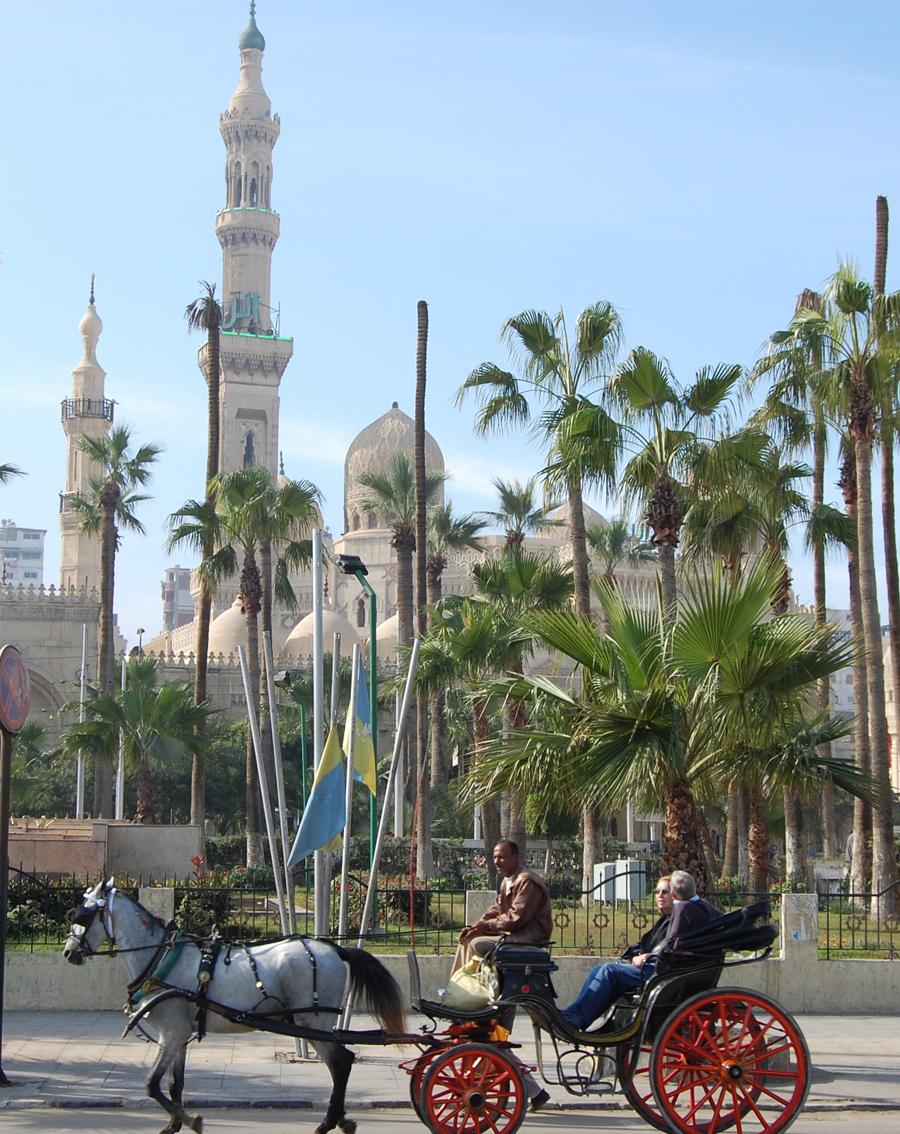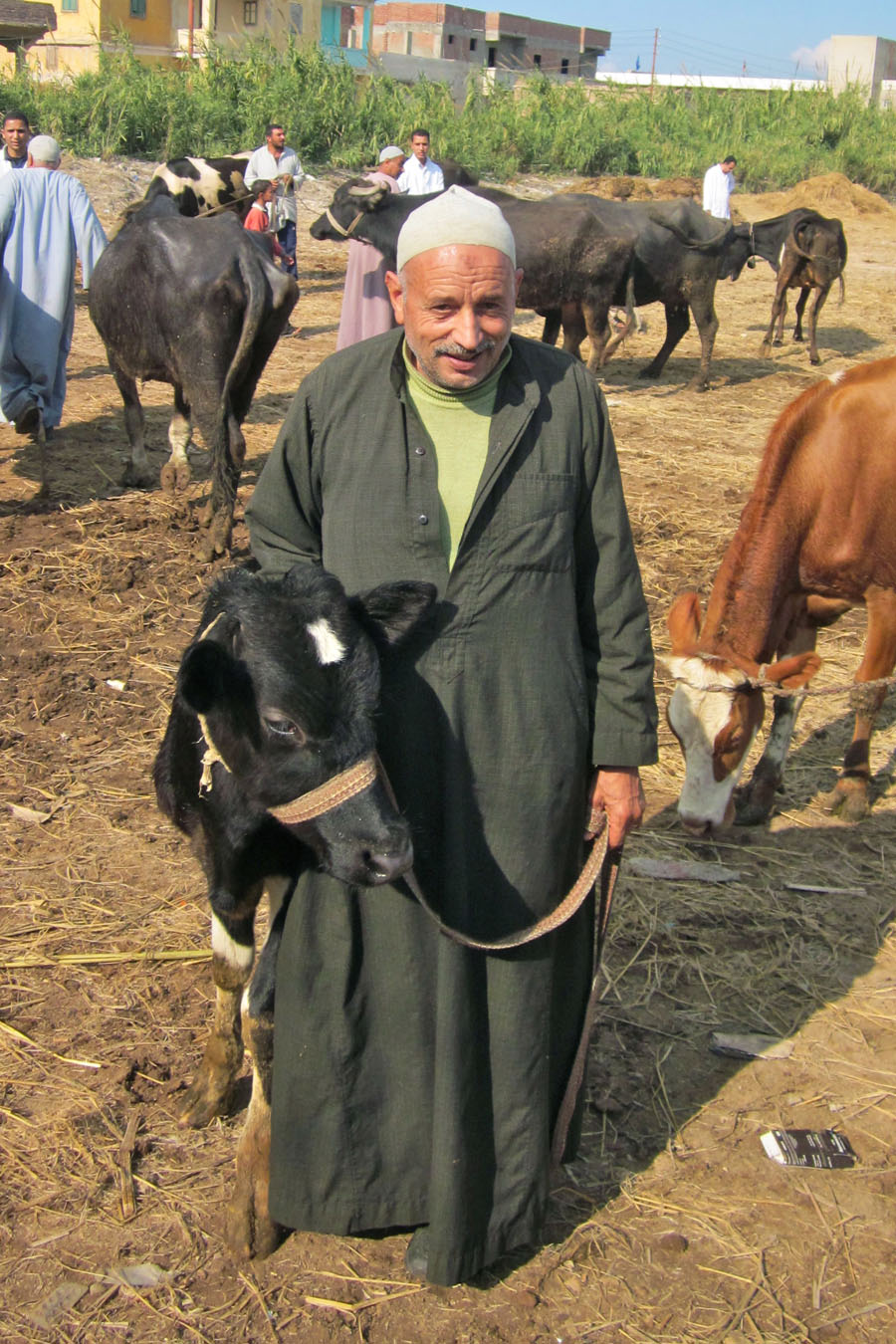Egypt's Animals: Continuity Amid Change
The scenery and culture may differ, but the roles of animals in Egypt are much the same: in public health, agriculture and food production; for transportation and recreation; as wild inhabitants and companions; as veterinary patients and in art. Even as people struggle for political change, animals create stability and sustenance, weaving us tightly into the fabric of life.
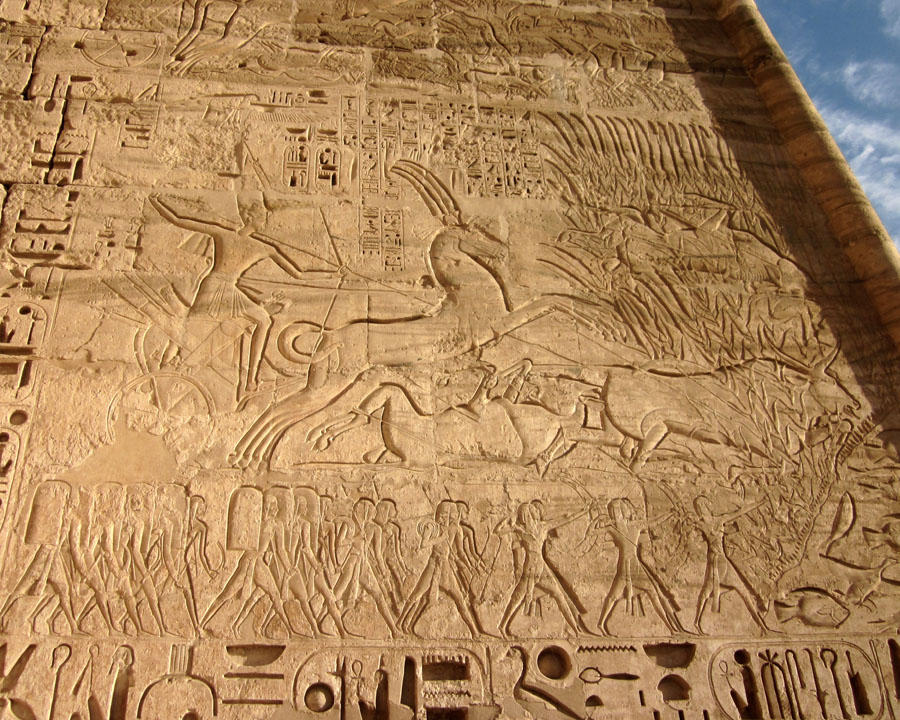 Wild bull hunt along the Nile (c. 1070 BC)
Wild bull hunt along the Nile (c. 1070 BC)
A bull crashes through riparian marshes, desperate to escape the deadly arrows and surging chariot of the pharaoh’s hunting expedition. At lower right, fish and waterfowl cavort beyond the fringed bank of the river. This deeply incised wall carving at the Temple of Ramesses III in Luxor is a masterpiece of Egyptian art, which often depicts animals in their natural environment.
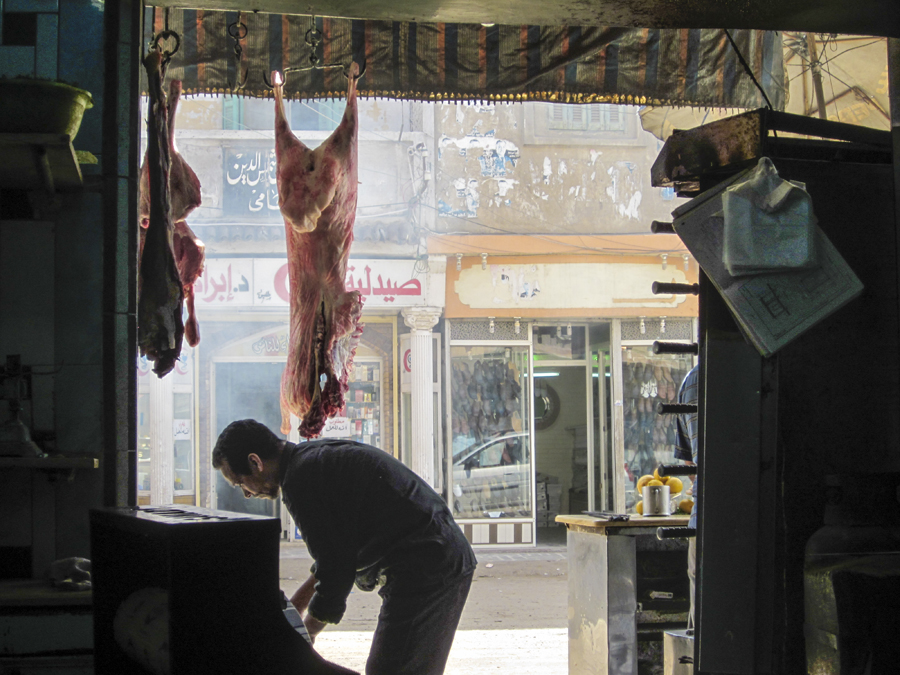
Delta diner
"Egypt is a country where shoes are kept clean behind glass storefronts and meat hangs in the open." Lunch at this modest establishment in rural Kafr-el-Sheikh was a tasty spread of grilled lamb, baba ghanoush, and stuffed tomatoes. Animals are slaughtered quickly and cleanly by the halal method, but a general lack of food safety knowledge leads to frequent food-borne illness.
Field microscopy
Part of a community campaign to provide veterinary services to rural villages, a veterinarian examines a fecal sample from a cow for parasite eggs, and an old woman consults with a veterinary student about her sick duckling, worried about avian flu. Rural poverty is on the rise in Egypt, and more than 40% of Egypt's poor are illiterate, impeding educational efforts to control endemic disease.
Driving tourists along Alexandria’s waterfront
Egypt’s estimated 1.2 million working horses and donkeys provide essential income for their owners. Veterinary care competes with traditional healing methods for treating lameness, heat stress, and infections.
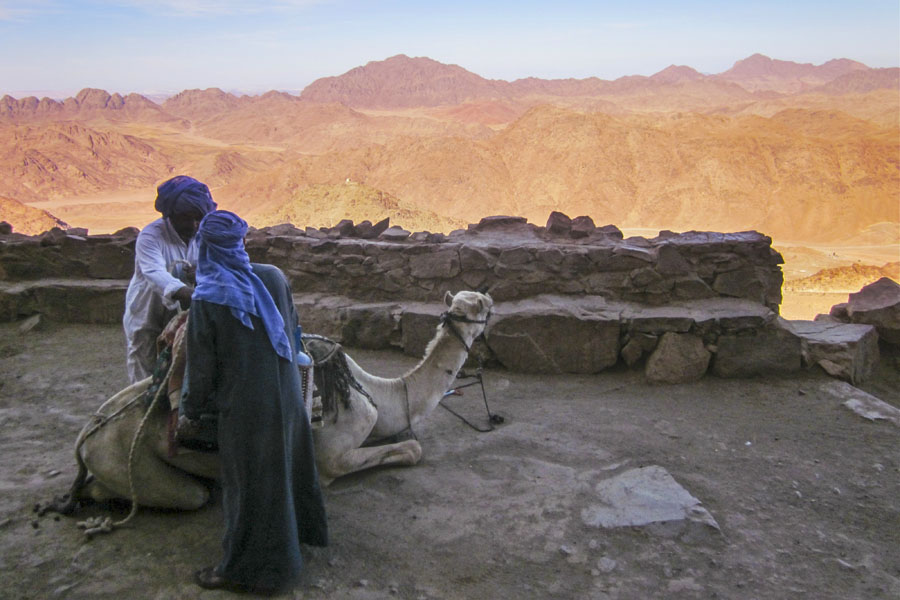
Ascending Mount Sinai
Sunset illuminates distant cliffs in the starkly beautiful landscape of the Sinai desert. Whether by camel or by foot, the trek to the top of Mount Sinai is challenging and, at times, crowded.
Egypt’s companion animals
Livestock are the true companion animals of rural Egypt, sharing a close bond with humans rooted in economic survival. Although the number of large intensive livestock production systems is increasing, 93% of Egypt’s 5 million cattle are raised on small farms with less than 10 animals.


